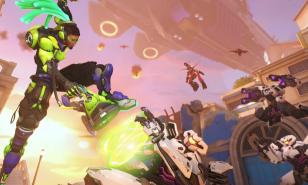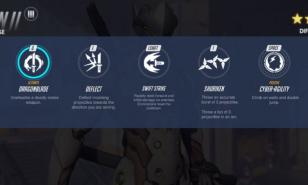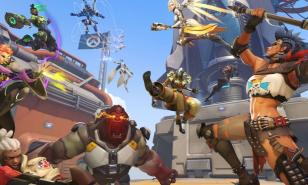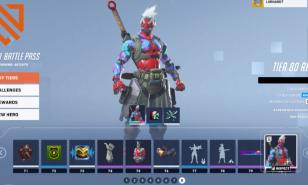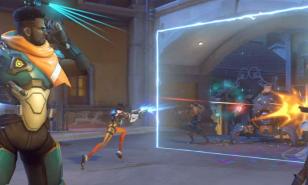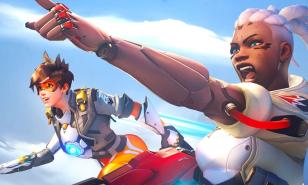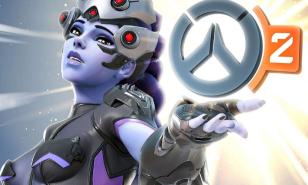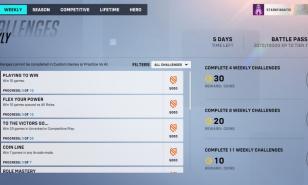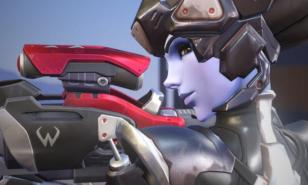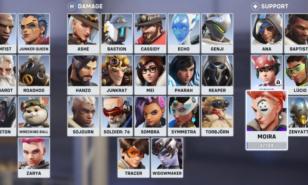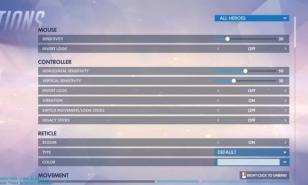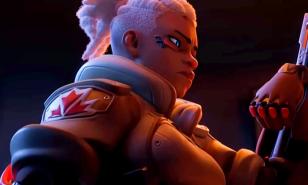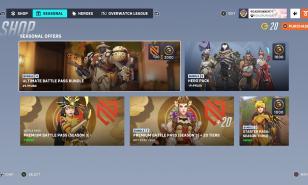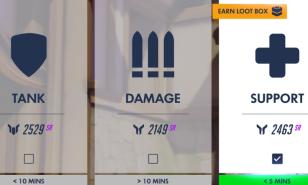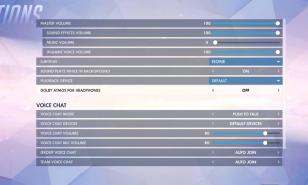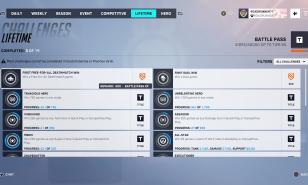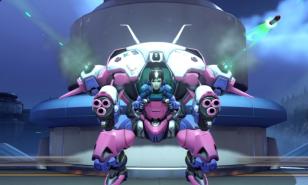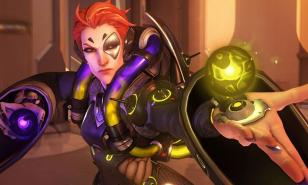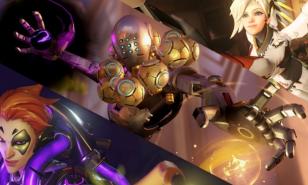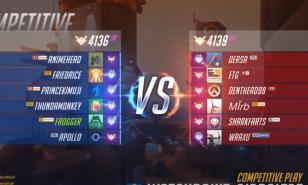Overwatch 2: How To Play Mercy Effectively

Who Is Mercy?
Mercy is a popular support hero in Overwatch 2. She is known for her high healing and powerful damage boost, along with her resurrect ability. Despite how easy Mercy is for beginners, mastering her is more difficult than players give her credit for. However, if you master her, you can drastically change the outcome of your games.
Mercy Intro
Mercy is a flying hero thanks to her guardian angel ability. She also has an angelic descent ability that allows her to fall slowly. The rest of her kit consists of the caduceus staff, caduceus blaster, resurrect, sympathetic recovery passive, and Valkyrie ultimate.
Mercy is a passive support hero who relies on other teammates to do well. Unlike other supports like Kiriko, Mercy can’t do damage at the same time as she does healing, which means her impact is limited. However, Mercy has a pocket play style where she can stick with one player who is doing well and make sure they (almost) never die.
If you want to thrive with Mercy, pair her with high-damage heroes like Soldier 76, Pharah, Sojourn, or Cassidy. She also pairs well with tanks like Reinhardt and supports like Kiriko and Ana.
With that in mind, here are fifteen tips on how to play Mercy effectively.
15. Heal Bot
Heal botting is a term used to refer to support players who only heal. For Mercy, that means you aren’t doing any damage boosting. Heal-botting is, in general, not a good thing to do. The reason why is because you aren’t impacting the game outside of healing. You need to keep your gameplay dynamic if you’re going to win more games.
While heal-botting is okay in some scenarios we’ll talk about later, you should have a balance between your offensive and healing beams. In Overwatch 2, you can check your usage by opening the leaderboard. You can keep track of how much healing you’re using instead of damage.
You should aim to keep your offensive and healing rates as equal as possible. That’s an ideal scenario since it means you’re doing a balance of healing and damage boosting. However, there are exceptions, and there is nothing wrong with having one that’s higher than the other. It’s impossible to get 50-50 every game, so focus on creating a fair balance instead of making them evenly matched.
14. Pocketing
Pocketing is something that makes my blood boil. As someone who likes to fly around as Mercy instead of sticking to one target, pocketing makes me upset. However, I understand that pocketing is a vital part of Mercy’s play style, especially the higher up the ranks you go. That’s why I’m telling you it’s okay to pocket.
Although it’s more fun to fly around and do your thing, pocketing a DPS can greatly benefit your team. You’ll keep the DPS player alive for longer and increase their damage output. Heroes like Soldier 76 and Pharah are perfect for pocketing because they already have high damage, but combined with Mercy’s damage boost, they’re unstoppable.
You can choose who to pocket based on which player is performing best. It’s less common, but you can pocket a tank too. A good D.Va can destroy the enemy team, especially with a Mercy pocket. All this isn’t to say you should pocket every game, but if you have a teammate who is carrying the team, you might as well pocket them so you have a higher chance of winning.
13. When To Damage Boost
Part of mastering Mercy is learning when it’s better to damage boost, even when your ally is missing some health. Damage boost is one of the most powerful abilities among the support heroes because of its potential. It’s almost always beneficial to the team. A mistimed Suzu or Immortality Field can be a detriment, but damage boost can be turned on and off with the click of a button.
If an ally is anti-healed by Junker Queen’s ult or Ana’s grenade, Mercy should damage boost her allies until they are able to be healed again. There is no benefit to putting the healing beam on them at that point, which means you should stick to the damage. If your teammate is about to secure a kill, unless the teammate is critical health, you should give them the damage boost so they can finish off the kill.
Heroes that can self-heal are more lenient with the healing beam. You can use the damage boost more often because if the ally gets too low, they can heal to get themselves out of the situation. You shouldn’t let your teammates die, but if you see a situation where the enemy can be finished off quickly, feel free to use your damage boost even if your allies are taking damage.
12. Resurrect
This tip is arguably one of the most important on this list because res is such a controversial topic. Some hate it; others tell players to get better at the game and adapt instead of complaining. Either way, resurrect is a powerful ability that brings one teammate back from the dead. It has a thirty-second cooldown, and it doesn’t reset upon death.
Do not forget that you can resurrect your allies. It’s easy to forget in the middle of battle, but try to remember that it gives you a major advantage. Beginner Mercy players will easily forget to resurrect allies or will be too scared to because of the heat of the battle. If you’re scared to res, ask your teammates for help.
If you don’t have a mic, try pinging the body, and it will let your teammates know you’re going to resurrect a fallen ally. As soon as you res, fly out of there, but keep your healing beam on the resurrected ally. The reason why is because they’re trying to get back into position. For a moment, they’ll be playing out of position. It’s easy for you to fly out, but your teammates don’t get that luxury, so support them until they can get to a safer spot.
11. Super Jump
With the minor nerf to Mercy’s guardian angel cooldown (while in air, the cooldown does not restart), super jump has become less powerful. Super jump happened due to a glitch back in Overwatch 1’s runtime. Mercy players used to be able to perform a super jump maneuver while flying, and now Blizzard has made it part of her movement in Overwatch 2.
Along with that, the Widow Hanzo meta is making it dangerous to super jump. The best way to play Mercy is to be smart about your super jumps. Only do them when they’ll benefit your movement and keep you alive. Super jump gives you a better view of the map, which falls under the movement benefits category. If you need a better view or you’re about to die, try super jumping.
Be wary of super jumping when a Widow or Hanzo is in the area, though. Stay out of their view and stay low to avoid getting shot. While floating in the air with a super jump, you’re an easy, clear target for the enemy snipers. Don’t do that to yourself; you’ll put your team at a disadvantage.
10. Valkyrie Justice
Alright, TikTok Mercy players, let’s calm down a bit. Although it’s fun to go battle Mercy during Valkyrie, consider the circumstances before you go in with your Barbie Blaster 3000. For starters, Valkyrie’s main benefit is the chain healing and damage boost. If your team needs the extra damage to win a team fight, the damage boost is going to do better than your blaster.
Yes, it’s fun to use it during Valkyrie, but you have to put the team above you (unless you’re playing unranked modes). Video games are supposed to be fun, but if you charge the enemy in Valkyrie and die, that’s not much fun, is it? I like battle Mercy as much as the next Mercy player, but it’s not going to get you anywhere if you rush in.
Going after a Pharah or Widowmaker your team isn’t killing is a good idea. Going after the entire enemy team, however, is not. If you’re going to use your blaster during Valkyrie, make sure it’s for one vulnerable target, like a Widow or Pharah. Try to make sure your battle Mercy episode doesn’t take up more than half of Valkyrie’s time; that way, you can still give your team the benefits of the ult. After all, you’re a support, not a DPS.
9. Damage
While on the topic of using Mercy’s Barbie Blaster, you should know it is okay to switch and do damage here and there. Not only will you build ult charge, but you also have a high chance of causing serious damage. Mercy’s pistol does more damage than players give it credit for, with five headshots (that are easy to hit) equaling death for most heroes.
As mentioned in the previous tip, if you see a vulnerable target and your team isn’t taking them out, go for the kill. You don’t want to push in or flank, but taking out your pistol to do some damage isn’t a bad thing. Don’t let your teammates bully you. You have a second support for a reason; they can take over healing while you do some damage here and there.
Another tip: aim for the head. Even though Mercy isn’t a hero that requires aim, you should make it your goal to aim for the head to get that bonus damage. Use the practice range and custom games to train your aim.
8. Range
Unlike other support heroes like Ana and Kiriko, Mercy doesn’t have long range. You need to keep that in mind while playing her. Her beam is short compared to Kiriko and Ana’s range. Thanks to that, you need to stay close to allies and use your fly to get better angles. That’s why Mercy pairs well with Ana and Kiriko: a close-range healer and a long-range healer are a great combo.
Practicing her range in the practice range. Practicing is the best way to improve the little things, which will add up and make you a much better player. Although her range doesn’t impact the way you’ll play too much, it’s better to know it just in case. I find myself spamming guardian angel when I’m in panic mode, and because of that, it can mess up my understanding of the range. Don’t be bad like me; be good.
7. Playing With Supports
Other support players are going to have their own play styles. Some may be aggressive, while others are passive. How much you’re healing depends on how good your second support is. So as much as the tips above provide a general outline for how to play Mercy, you also have to be wary of your second support.
For example, if you have a Kiriko that’s flanking every fight and not healing, you’re going to have to heal bot for a bit. On the other hand, if your Kiriko is carrying healing, use your damage boost more often. You can also take this opportunity to pull out your pistol and do some damage.
Along with that, you want to keep your fellow support alive. At the end of the day, supports stick together. Support players both go through the struggle of being blamed for everything that goes wrong, so it’s best to keep your teammate alive.
6. Playing With Tanks
Your tanks lead the frontline. Whenever I play Mercy, I find myself hating when the tank is Doomfist or Wrecking Ball because of how their play styles rely on jumping in too far for me to follow. Either way, you need to follow your tank and match their play style unless you are pocketing a DPS.
Your tanks are going to take the most damage, meaning you’ll be healing them the most. You can use their large bodies as a way to fly. Use their big hitboxes to give yourself a scapegoat if you get into trouble. As a form of measurement, you should never be pushing in farther than your tank if you want to stay alive (unless you are using Valkyrie).
Overall, playing with tanks is fairly simple since all you have to do is match their play style and make sure they stay alive. Damage boost them at the right moments (i.e., Reinhardt when he firestrikes) and focus on keeping them alive.
5. Playing With DPS
DPS is the most popular role in the game, to no one’s surprise. It has the largest cast of characters by far, which means you are going to see different DPS comps all the time. Damage boost works best on high-damage heroes such as Junkrat, Ashe, Soldier 76, Pharah, Sojourn, and Bastion. If you have to choose between giving the damage boost to Tracer or Bastion, you should probably choose Bastion unless Tracer is about to secure a kill.
In general, you should help out the DPS who are about to secure kills. The more you help them, the more kills your team will get. Pay attention to the enemies and their health bars; that way, you’ll become a more observant support player and will work better with your DPS teammates.
Along with that, you should know when to stick with DPS and when to stick with your tank. Although it can get complicated quickly since every situation is different, if your tank isn’t having any trouble, you should go with your DPS so they have a higher chance at securing kills. Your damage boost is one of the most powerful abilities in the support category, so use it whenever you can.
4. When To Use Valkyrie
Unfortunately, Valkyrie is one of the weakest support ults, if not the weakest. It doesn’t offer any game-changing abilities, but it does make Mercy harder to kill and allows her to chain heal or damage boost. Although the ability isn’t game-changing, it can make an impact depending on how well you use it.
You shouldn’t use it randomly. As is the case with most ults, you shouldn’t use them during downtime or in between fights. Since it charges so quickly, you can use it at the beginning of almost every team fight to give yourself an advantage. You can also use it when you think the enemy team is about to push in.
Many higher-ranked players suggest using Valk when the enemy Mercy uses her Valk. They call it "counter-Valking". Although this isn’t a bad idea, remember that you aren’t required to do it every single time the enemy Mercy Valks. If your entire team is on the brink of death, you don’t need to wait for the enemy's Mercy; use your Valk so you can save lives.
3. When Not To Resurrect
We discussed the basics of resurrect, but let’s take a deeper look and see why you shouldn’t resurrect all the time, even if it’s for the sake of your stats. For starters, most obviously, you shouldn’t resurrect right out of spawn. Even in desperate situations when Overtime is ongoing, you should save your res for a fight since it has such a long cooldown.
Dying outside spawn means you’re saving your teammate from ten seconds and a two-foot walk. It’s not very beneficial for anyone and puts you at a disadvantage. You also shouldn’t res someone who dies too far in the enemy’s line. You’ll die in a matter of seconds unless the enemies are conveniently ignoring you.
Lastly, you shouldn’t resurrect a teammate if you’re the only one alive. Panic resurrections do nothing but cause a detriment because res doesn’t reset when you respawn. Along with that, you’re harming the teammate you revived because now your team is even more staggered. If you’re the last one alive, either die or escape; don’t res or panic res.
2. Body Blocking
Occasionally, every support needs to body block for their teammates. Although I normally suggest support players keep themselves alive for as long as possible, there are moments where taking a risk and body blocking are more important. The best example I can give you is Mei’s ult. If a teammate is frozen and about to meet their demise, fly in and take the icicle for them (assuming you have high health).
The reason you do this is because your healing can’t heal a large amount of damage all at once. A headshot from a Mei icicle is deadly, even if you have your healing beam on an ally. The same applies to other high-damage abilities. If your teammate is about to die and you have good health, you should body block.
It’s a risky play that won’t always work, but if you’re confident you can take a hit or two without dying, do it. Fly in, body block, then fly out. We earlier talked about using a tank as a scapegoat. If you are body blocking for a DPS, find the tank so that when you’re done body blocking, you can fly to the tank to reposition yourself and get out of harm’s way.
1. Movement
The most essential part of Mercy’s kit is her movement. Her movement is what makes the difference between life and death, and the better you are at moving, the more likely you are to master Mercy. Guardian Angel and Angelic Descent are the two parts of Mercy’s kit you’ll have to master if you want to perfect your movement with her.
Unfortunately, mastering her movements is a skill that is only learned over time. There aren’t many tips I can give to help you master her movement faster since it’s you who needs to get a feel for how she moves. Every Mercy player plays differently, so the best I can do is give you a few general tips.
For starters, try playing Mercy parkour in custom games so you get a feel for her movement. That will help you practice the more complex parts of her movement. Along with that, practice weaving in and out of enemy fire to help protect yourself and master her movement. Lastly, practice the super jump by doing it more often in fights until you get a hang of what you need to do to trigger the super jump.
You May Also Be Interested In:
- Log in or register to post comments
 Home
Home PC Game Trailers
PC Game Trailers News
News Menu
Menu


